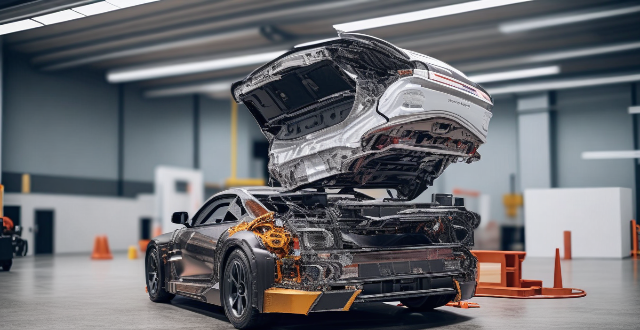The production line revolutionized car manufacturing by allowing for mass production, increased efficiency, and cost reduction. It led to the standardization of parts, division of labor, continuous flow of work, improved quality control, and scalability. These changes paved the way for modern automotive manufacturing practices and continue to influence the industry today.

The Impact of the Production Line on Car Manufacturing
The production line, also known as the assembly line, revolutionized the car manufacturing industry by changing the way cars were built. This innovation allowed for mass production and increased efficiency in the manufacturing process. Here's a detailed look at how the production line changed car manufacturing:
1. Standardization of Parts
Before the production line, each car was built individually, with parts being made to fit specific vehicles. With the introduction of the production line, parts became standardized. This meant that interchangeable parts could be used across multiple vehicles, reducing the time and cost associated with custom-made components.
2. Division of Labor
The production line allowed for a division of labor among workers. Instead of one person building an entire car, tasks were broken down into smaller, more specialized jobs. Each worker was responsible for a specific task, such as installing doors or attaching wheels. This specialization led to increased efficiency and faster production times.
3. Continuous Flow of Work
The production line created a continuous flow of work, where each stage of the manufacturing process fed into the next. This eliminated downtime between tasks and ensured that each step was completed in a timely manner. As a result, cars could be built faster and more consistently than ever before.
4. Reduced Costs
The production line significantly reduced the cost of car manufacturing. By streamlining the process and increasing efficiency, manufacturers were able to produce cars at a lower cost per unit. This made cars more affordable for consumers and opened up new markets for automobile sales.
5. Increased Quality Control
With the production line, quality control became more manageable. Since each worker was responsible for a specific task, it was easier to monitor their performance and ensure that they were meeting quality standards. Additionally, standardized parts and processes helped to maintain consistency in the final product.
6. Scalability
The production line made it possible to scale car manufacturing to meet growing demand. As more cars were needed, additional lines could be added or existing lines could be expanded to increase output. This flexibility allowed manufacturers to respond quickly to market changes and stay competitive.
In conclusion, the production line had a profound impact on car manufacturing by standardizing parts, dividing labor, creating a continuous flow of work, reducing costs, improving quality control, and enabling scalability. These changes paved the way for modern automotive manufacturing practices and continue to influence the industry today.